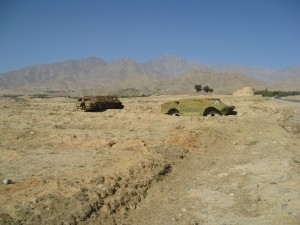It has long been my view that the source of conflict in Afghanistan results from a few factors, namely: poverty, a huge drugs cartel, an underdeveloped educational and civil society infrastructure, and a history of conflict. And among these, I would place poverty at the center. Today’s New York Times reports that huge mineral resources have been identified in Afghanistan and the value may be on the order of $1 trillion. This could be of enormous importance for the development of the country. According to the Times article, “Afghanistan could eventually be transformed into one of the most important mining centers in the world….†This has the potential to create real opportunities for many Afghans and in so doing, provide a strong alternative to the opium economy, which according to the World Bank accounts for about one-third of Afghanistan’s economy. (See Afghanistan: Drug Industry and Counter-Narcotics Policy.)
Afghanistan is one of the poorest countries outside of Africa and this poverty is certainly a major contributor to the violent struggle that is besieging the country. According to the World Bank, in 2008, the per capita income of Afghanistan was $366. (See Wikipedia for comparative statistics.) At an average of 5.5 births per women, birthrates are very high. Moreover, education levels are very low, with average years of education for males 11 years and only four years for females. Only a little over 28% of the population is literate. These dire facts all contribute to a situation whereby life itself is brutally short with current life expectancy at birth only 44.7 years. (These are the current data available online at the CIA’s World Factbook.)
When I visited Afghanistan, in September 2009 I was told very plainly by an insightful Afghan government official, that the biggest problem for Afghanistan is poverty. Here are the words he said to me:
Most problems cannot be solved by military means. We need to find other ways. The biggest source of problems, including the current conflict here, is poverty. Let me give you an example. Not long ago, our police caught a suicide bomber before he succeeded in blowing himself up. He had previously lost his leg and his prosthetic leg had been filled with explosives. After he was arrested, the police asked him why he was planning to do that. He said that he was so poor that he and his family were desperate. The Taliban, however, were going to pay him to be a suicide bomber, and so he said he felt he could be more helpful to his family by dying than by living. This is an example of why we need to find a solution to Afghanistan’s poverty. Drug addiction, suicide, and so many social problems all come from poverty. The poor can’t afford to go to school and that adds to poverty.
The war in Afghanistan has dragged on too long. To bring peace to Afghanistan, we need to help Afghans stand up for themselves so that they will be on the front lines to defend what a good society can offer them. The main work of peacemaking in Afghanistan is to empower those Afghans who can help in the creation of a new and strong country. Peace in Afghanistan will come when average Afghans have opportunities provided by a functioning society that promises a brighter future than that offered by the drugs economy and violent extremists. Today’s report on the minerals discovery is a hopeful sign.
Peace will come to Afghanistan eventually. It can’t come too soon. Let’s continue the effort to bring opportunities to Afghanistan. In doing so we will be supporting efforts to create a stable, flourishing Afghanistan.

0 Comments